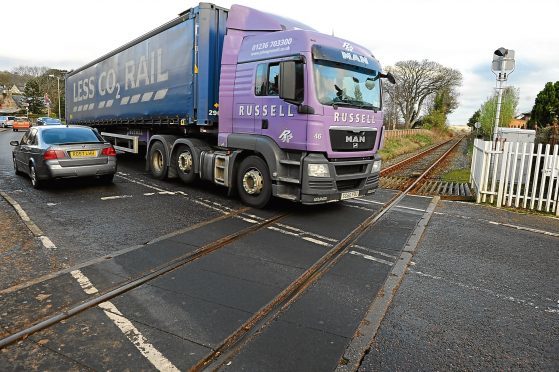A revamp of stations between Inverness and Caithness could get under way within weeks as part of a package of measures to transform Scotland’s worst-performing railway.
Plans for a new timetable and a fresh marketing drive are also due to be unveiled early next year to try to boost the struggling 160-mile Far North Line.
Dwindling passenger numbers, delayed trains and timetabling troubles have placed a question mark over the future of country’s “longest rural railway line” in recent years.
Recent statistics showed that four of the six worst-performing stations when it came to trains arriving within five minutes of their scheduled time were on the route, with Wick achieving the target just 64.2% of the time, Tain at 77.1%, Inverness with 78.6% and Invergordon on 79.3%.
Amid mounting concern, Scottish Government minister and Highland MSP Fergus Ewing announced the creation of the Far North Line Review Group in December last year to draw up plans to try to tackle the issues.
Now the group is preparing to unveil its proposals, with station improvements expected imminently, as well as a detailed plan of action to change service patterns and ramp up the marketing and promotion of the route.
Further proposals for long-term improvements to the line are also expected to follow.
Last night, a Transport Scotland spokesman said: “The review team is looking at whole system rail improvements which can be considered for the rail investment strategy beyond 2019 to improve overall performance on our longest rural railway line and make the most of this important asset for passengers, for sustainable freight transport, and for the communities and businesses along its length.”
It is not known whether the new marketing drive has been inspired by the suggestion of David Whiteford, chairman of the North Highland Initiative, which launched the hugely successful North Coast 500 driving route, who proposed rebranding the rail journey as “The Great North Highland Line”.
He told the Press and Journal that with imaginative marketing he believed it could repeat the success of the NC500 and become “one of the world’s most talked about train journeys”.
However, Rhoda Grant, Labour MSP for the Highlands and islands and honorary vice president of the Friends of the Far North Line group, said the first priority of transport chiefs should be on improving the service for local passengers.
“I think all this is welcome but what has to happen is improved reliability and speed. Those are the two issues,” she said.
“You need good station facilities if you’re waiting for an overdue train but it would be better if it wasn’t overdue in the first place.
“The things actually causing the delays need to be looked at.”
Built in stages from 1862 and finally opened all the way from Inverness to Wick in 1874, at one time the line featured 45 stations.
Many closed during the 1960 rationalisation but a number have since reopened, including Beauly, Conon Bridge, Muir of Ord and Alness, and there is a campaign in Evanton to reopen the local stop-off.
Four train services a day operate on the route between Monday and Saturday.
Jamie Stone, president of the Friends of the Far North Line group and Liberal Democrat MP for Caithness, Sutherland and Easter Ross, said it was vital that action is taken to preserve the route.
“What I find most worrying really was that public confidence in the line was turning and that becomes a vicious circle with less passengers using the line,” he said. “It’s critical that the downturn in usage is reversed and reversed quickly, otherwise we get into an incredibly dangerous situation where people wonder ‘what’s the point in having the line at all’.
“Our forefathers had the wisdom to build the line and we owe it to generations to come to use it and improve it.”
Comment, Page 25
